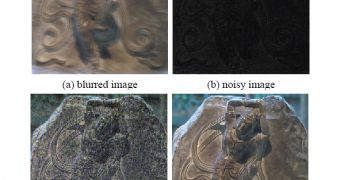SIGGRAPH 2007 is the stage where Microsoft will unveil a set of research projects designed to take high-quality digital photography to the next level. The Redmond company aims to no less than introduce simplicity in average digital imagery editing scenarios. The Microsoft projects will streamline the way photographers handle digital images. According to the company, research labs from Asia, Cambridge and Redmond will all participate at this year's SIGGRAPH international conference on computer graphics and interactive techniques. No less than 14 out of the total of 108 papers for SIGGRAPH 2007 are based on Microsoft research.
The company has chosen to emphasis its contribution to the conference by showcasing three of the projects: Image Deblurring with Blurred/Noisy Image Pairs, authored by Lu Yuan and Long Quan at The Hong Kong University of Science and Technology; Photo Clip Art and Soft Scissors. "This is not the first, nor the last joint paper between Microsoft Research Asia and the Department of Computer Science and Engineering at Hong Kong University of Science and Technology," says Professor Quan of The Hong Kong University of Science and Technology and co-author on The Image Deblurring with Blurred/Noisy Image Pairs paper. "It reflects our long time partnership in Vision and Graphics research."
The research on deblurring involves bundling a pair of blurred and noise images in order to achieve a clean photography. "The result is that the reconstructed image is sharper than the blurred image, and clearer than the noisy one. Using a blurred/noisy image pair for input, we are able to obtain incredible image deblurring results that were hardly imaginable before," revealed Jian Sun, Microsoft Research Asia.
Photo Clip Art is a technology that will increase the level of realism in synthesized images. The research will simplify to the maximum the process of inserting new objects into an existing photography. Details such as object segmentation, blending, size and orientation in the 3D space, and scene lightning will all be handled by automated algorithms.
"Our central goal was to shield the user from the arduous tasks typically involved in image compositing," said Carsten Rother, Microsoft Research Cambridge. "The user is asked to do only two simple things. First, pick a three-dimensional location in the scene to place a new object and then select an object to insert using a hierarchical menu. Instead of trying to manipulate the object to change factors such as its orientation and color distribution, we simply retrieve an object of a specified class that has all the required properties from our large object library."
Last but not least, Soft Scissors was presented by Michael Cohen in Microsoft's Redmond research lab, as a simple method to extract objects from an image. "The system looks ahead of the user's actions to see how fuzzy the subject is and adjusts how soft the scissors are to come up with a much clearer image," says Cohen. "It just does the right thing automatically. Users can select the new background ahead of time and then, as they're brushing. Soft Scissors draws a soft line, a line that gradually and softly separates the foreground and background."

 14 DAY TRIAL //
14 DAY TRIAL //